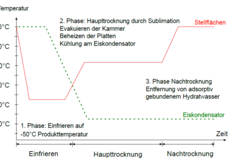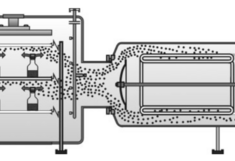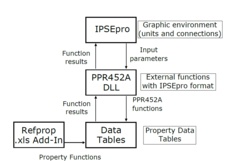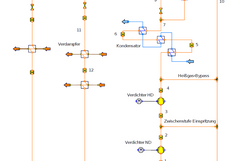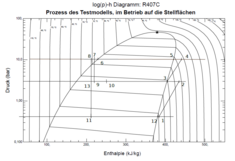Modern pharmaceutical products such as drugs, bacterial cultures and vaccines, as well as groceries which would lose important properties of effectiveness or quality in thermal drying methods due to the high temperature, are often treated with freeze drying. Freeze drying is
a gentle drying method for particularly sensitive products. However, freeze-drying plants are a challenge for refrigeration technology because they are operated at very low temperatures (<-40°C) and have to maintain constant cooling conditions over long drying times. This results in high investment and operating costs (energy consumption).
When designing such systems, suppliers often still rely on experience. For this matter simulation models could serve as support for optimization and design. In serveral research projects a prototype of a freeze-drying plant for pharmaceutical products is observed. With the help of a simulation software (IPSEpro), the process is mapped in its main features. The aim is a validated process model, with which further process design and dimensioning should be possible.
The substance data required for the simulation of the wide range of refrigerants and refrigerant mixtures are not always implemented in the software applied. However, this data is necessary for the creation of a valid model to calculate the thermodynamic state and process variables. The substance data of the refrigerant (R452A), which is used in the investigated plant, are not implemented in IPSEpro by default. The problem of the missing interface between simulation software and fluid property data is solved via a separate DLL. The required data comes from an external source (NIST) and is stored in tables accessed by the DLL. The return values are formed by interpolation between the individual table entries. Seven substance data tables are required for the implementation of substance data.
With the help of the implemented substance data, it is possible to create a basic model for the investigated freeze-drying process. Currently, the validation of the simulation model with measured data is being carried out. For this purpose, various measurement points are recorded at different operating states of the plant in the prototype (cooling and freezing process, holding process, heating process and resublimation) and compared with model data.
For futher information, please contact DI Dr. Magdalena Wolf.
Publications:
Keller, T., Kovar, M., Wolf, M., Sirnik, B., Macheiner, G., Pröll, T., "Modellentwicklung -und validerung eines kältetechnischen Prozesses zur Gefriertrocknung als Grundlage für die Prozessauslegung", at: Deutsche Kältetechnik Tagung 2020, November 19-20, 2020.
Keller, T., 2019, "Modellierung eines kältetechnischen Prozesses zur Gefriertrocknung mit dem Kältemittel R452A", Master thesis, Technische Universität Wien.

